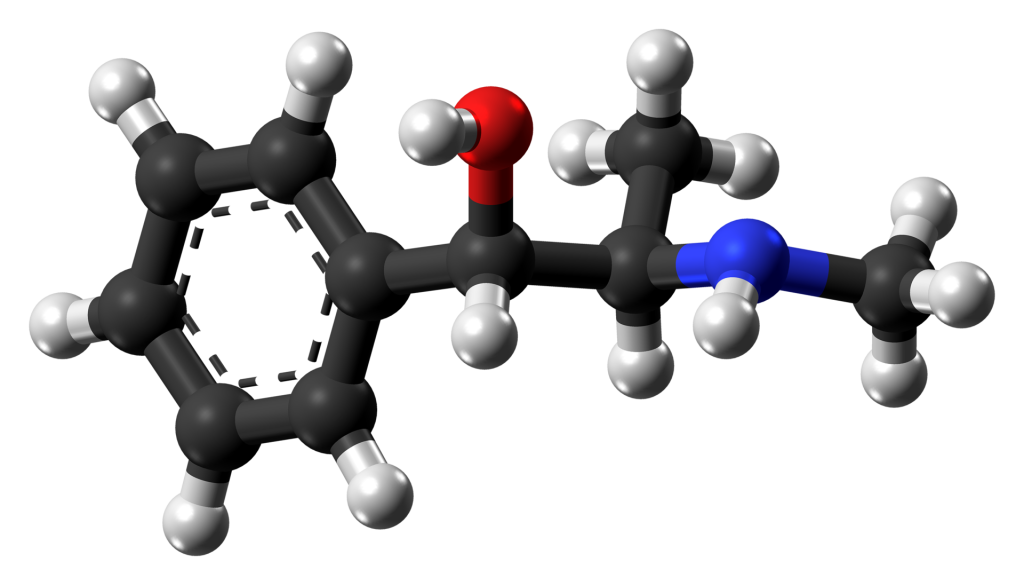Ephedrine is a chemical compound that has garnered attention for its potential uses in various research fields. However, when considering where to buy this research chemical, caution is paramount due to the proliferation of online sellers and vendors offering Ephedrine for sale. This critical review aims to shed light on the challenges and risks of purchasing Ephedrine from such sources.
One of the primary concerns with online Ephedrine sellers is the lack of regulation and oversight. Many vendors operate in a legal grey area, marketing Ephedrine as a “research chemical” to circumvent drug laws. This designation raises ethical questions about the intentions of these sellers, as Ephedrine is often sought after for non-scientific purposes.
Moreover, the quality and purity of Ephedrine obtained from online sellers can be questionable. With stringent quality control measures, researchers can avoid getting a contaminated or subpar product, compromising the integrity of their experiments and studies.
Additionally, the anonymity of online transactions makes it difficult to trace the origins of Ephedrine sold by these vendors. This lack of transparency can pose significant risks to researchers and the broader community, as it becomes challenging to identify the source of any adverse effects or potential misuse.
Furthermore, when purchased from online vendors, Ephedrine may need to come with appropriate safety and usage guidelines. This omission can lead to a need for more awareness regarding the potential dangers and proper substance handling.
- 1 Summary
- 2 History and culture
- 3 Chemistry
- 4 Pharmacology
- 5 Subjective effects
- 6 Toxicity
- 7 Legal status
- 8 FAQ
- 8.1 1. What is Ephedrine?
- 8.2 2. How is Ephedrine used?
- 8.3 3. Is Ephedrine available over the counter (OTC)?
- 8.4 4. Are there any side effects of Ephedrine?
- 8.5 5. Can Ephedrine be addictive?
- 8.6 6. What is the recommended dosage of Ephedrine?
- 8.7 7. Can Ephedrine be used for weight loss?
- 8.8 8. Are there any legal restrictions on Ephedrine?
- 8.9 9. Can Ephedrine interact with other medications?
- 8.10 10. Is Ephedrine safe for everyone to use?
- 9 References
Summary
Ephedrine is a naturally occurring compound derived from the Ephedra equisetina plant, primarily recognized for its central nervous system stimulation properties. It serves various purposes, including acting as a stimulant, aiding concentration, functioning as a decongestant, and suppressing appetite. Additionally, it finds application in preventing low blood pressure during spinal anesthesia procedures.
In terms of chemical structure, Ephedrine closely resembles methamphetamine and pseudoephedrine. However, its effects on the central nervous system are notably milder and have a longer duration compared to those of amphetamines. Furthermore, its peripheral stimulatory effects are similar to, albeit less potent than, epinephrine (commonly known as adrenaline), a hormone naturally produced by the adrenal glands within the human body. Patience.
| Identifiers | |
|---|---|
| show IUPAC name | |
| CAS Number | 299-42-3 as sulfate: 134-72-5 |
| PubChem CID | 9294 |
| IUPHAR/BPS | 556 |
| DrugBank | DB01364 |
| ChemSpider | 8935 as sulfate: 4514262 |
| UNII | GN83C131XSas sulfate: U6X61U5ZEG |
| KEGG | D00124 as sulfate: D04018 |
| ChEBI | CHEBI:15407 |
| ChEMBL | ChEMBL211456 as sulfate: ChEMBL1523964 |
| CompTox Dashboard (EPA) | DTXSID0022985 |
| ECHA InfoCard | 100.005.528 |
| Chemical and physical data | |
| Formula | C10H15NO |
| Molar mass | 165.236 g·mol−1 |

History and culture
In traditional Chinese medicine, Ephedrine, known as “má huáng,” has a historical presence dating back to the Han dynasty (206 BC – 220 AD). It was revered for its anti-asthmatic and stimulant properties. Fast forward to 1885, when Japanese organic chemist Nagai Nagayoshi achieved a significant breakthrough by chemically synthesizing Ephedrine. His work drew inspiration from the rich tradition of Japanese and Chinese herbal medicines.
The industrial production of Ephedrine commenced in China during the 1920s, with Merck introducing it to the market under the name “ephetonin.” This period witnessed substantial growth in ephedrine exports from China to Western countries, surging from a mere 4 tonnes to a staggering 216 tonnes between 1926 and 1928. Ephedrine gained considerable popularity as an effective treatment for asthma, mainly due to its oral administration capability, a significant advantage over adrenaline, which was the conventional therapy at the time.
Ephedrine’s prominence in asthma treatment reached its zenith in the late 1950s. However, over the years, its therapeutic use gradually waned. Ephedrine transitioned from mainstream medicine into a less regulated space, becoming associated with street drugs and nutritional supplements.
Many countries have imposed stringent bans and regulations on ephedra and ephedrine products due to their pivotal role in the illicit production of methamphetamine, a highly addictive substance. Moreover, these products have been linked to severe adverse events, including heart attacks and strokes, further necessitating their controlled distribution and utilization.

Chemistry
Ephedrine is a substituted amphetamine and shares a structural resemblance to methamphetamine, differing solely by including a hydroxyl group (—OH).
This sympathomimetic amine, also considered a substituted amphetamine, bears a molecular structure akin to phenylpropanolamine, methamphetamine, and epinephrine (commonly known as adrenaline). Chemically, it manifests as an alkaloid with a phenethylamine framework discovered in various plants within the Ephedra genus (part of the Ephedraceae family). Its primary mode of action involves augmenting the activity of norepinephrine (noradrenaline) at adrenergic receptors. Ephedrine is predominantly available in the form of hydrochloride or sulfate salt.
Ephedrine’s distinctive characteristic lies in its optical isomerism, characterized by two chiral centres, yielding four stereoisomers. Conventional nomenclature designates the enantiomer pair with the stereochemistry (1R,2S) and (1S,2R) as “ephedrine,” while the enantiomer pair with the stereochemistry (1R,2R) and (1S,2S) is termed “pseudoephedrine.” Notably, Ephedrine remains a substituted amphetamine and a structural analogue of methamphetamine, with their differentiation primarily resting on the presence of a hydroxyl group (—OH).
Pharmacology
Ephedrine primarily exerts its effects by enhancing catecholamine activity at alpha, beta-1, and beta-2 adrenergic receptors. Additionally, it acts as a norepinephrine-dopamine-releasing agent (NDRA).
Ephedrine engages with a segment of the sympathetic nervous system (SNS) as a sympathomimetic amine. Its principal mode of action revolves around indirectly stimulating the adrenergic receptor system, thereby increasing norepinephrine activity at postsynaptic α and β receptors. Although the direct interaction with α receptors remains debatable, it is generally considered improbable.
L-ephedrine, particularly its stereoisomer or pseudoephedrine (also found in Catha edulis), possesses indirect sympathomimetic effects. Its ability to traverse the blood-brain barrier classifies it as a central nervous system (CNS) stimulant akin to amphetamines, albeit with less pronounced effects. This is attributed to its capacity to release noradrenaline and dopamine in the substantia nigra.
The presence of an N-methyl group results in decreased binding affinities at α receptors compared to norephedrine. Notably, Ephedrine exhibits superior binding compared to N-methylephedrine, which includes an additional methyl group at the nitrogen atom. Additionally, the steric orientation of the hydroxyl group plays a pivotal role in receptor binding and functional activity.
Subjective effects
Disclaimer: The effects mentioned below are based on the Subjective Effect Index (SEI), which relies on anecdotal user reports and the personal assessments of PsychonautWiki contributors. It is crucial to approach these effects with a healthy degree of scepticism.
These effects may not necessarily manifest predictably or consistently. However, higher doses are more likely to bring about the full range of products. Moreover, at higher doses, the risk of adverse effects, including addiction, severe injury, or even fatality ☠, significantly increases.
Physical:
- Stimulation
- Bronchodilation
- Appetite suppression
- Enhanced stamina (often employed by athletes and bodybuilders as a performance enhancer)
- Physical euphoria
- Nausea (at high doses)
- Dry mouth
- Vasoconstriction
- Elevated heart rate (Ephedrine is known to increase heart rate to a greater extent compared to other amphetamines)
- Spontaneous bodily sensations
- Increased perspiration
- Irregular heartbeat (Heart palpitations are more frequently reported with ephedrine than with other amphetamines)
- Elevated body temperature
- Pupil dilation (although milder and less frequent than with other amphetamines)
- Teeth grinding
Visual:
Ephedrine is rarely associated with noticeable visual effects when compared to other amphetamines, possibly due to its milder influence on dopamine relative to epinephrine. Nonetheless, mild enhancements and distortions may occur, including:
- Visual acuity enhancement
- Double vision
Cognitive:
- Cognitive euphoria (reported to be similar to but more intense than amphetamine-induced euphoria but less severe than that induced by methamphetamine or MDMA)
- Enhanced empathy, affection, and sociability
- Anxiety
- Irritability
- Improved focus
- Memory enhancement
- Accelerated thought processes
- Increased appreciation for music
- Ego inflation
- Time compression (more pronounced with ephedrine than with most other stimulants)
- Altered libido (some users report increased libido, while others experience a reduction; generally milder compared to other amphetamines)
- Motivation enhancement
- Emotion suppression
- Heightened wakefulness
Toxicity
It is imperative to prioritize harm-reduction practices when using this substance. Ephedrine stands out among stimulants for its notable impact on the cardiovascular system, and its consumption has been linked to severe health risks, including heart attacks, strokes, and arrhythmia.
Lethal Dosage:
An unfortunate case involved a 28-year-old white female with a history of two prior suicide attempts, who was found deceased in her residence by her common-law husband. Autopsy findings revealed no significant abnormalities except partially dissolved ephedrine tablets in the stomach. Noteworthy toxicological findings indicated ephedrine concentrations in the blood at 11 mg/L, in the liver at 24 mg/kg, in the kidney at 14 mg/kg, and in the brain at 8.9 mg/kg.
Tolerance and Addiction Potential:
Similar to other stimulants, chronic ephedrine use carries a moderate risk of addiction and can lead to psychological dependence in specific individuals. Tolerance to ephedrine’s effects develops rapidly with repeated and frequent usage. Moreover, ephedrine exhibits cross-tolerance with other dopaminergic stimulants, reducing impacts from most other stimulant compounds following ephedrine consumption.
Dangerous Interactions:
The section on dangerous interactions is incomplete and may contain inadequate or inaccurate information. It is crucial to be aware that many psychoactive substances, which may be safe when used individually, can become dangerous and potentially life-threatening when combined with specific other substances. Some known severe interactions of ephedrine include iobenguane I 123, isocarboxazid, linezolid, phenelzine, procarbazine, rasagiline, selegiline, and tranylcypromine. Always conduct thorough independent research, consult medical professionals, or refer to authoritative sources to confirm the safety of combining two or more substances before consumption.
Legal status
Canada: In Canada, Ephedrine is available over the counter (OTC) in 8-milligram doses for respiratory purposes.
Sweden: In Sweden, Ephedrine is strictly regulated and requires a prescription for access.
United States: In the United States, Ephedrine is subject to control under the Combat Methamphetamine Epidemic Act of 2005. It can be purchased from behind the counter in all U.S. states. Additionally, all purchases of pseudoephedrine, ephedrine, and phenylpropanolamine are documented and maintained in state databases to prevent individuals from exceeding daily and monthly limits. These limits are set at 3.6 grams per day for any of these substances and 9 grams over 30 days. Pseudoephedrine products can also be obtained in larger quantities with a valid prescription.
FAQ
1. What is Ephedrine?
Ephedrine is a medication and stimulant that can be used to treat various medical conditions, primarily for respiratory purposes. It belongs to a class of drugs known as sympathomimetic amines.
2. How is Ephedrine used?
Ephedrine is typically used to relieve shortness of breath and congestion associated with asthma, bronchitis, or allergies. It may also be used as a performance enhancer by athletes and bodybuilders.
3. Is Ephedrine available over the counter (OTC)?
The availability of Ephedrine varies by country. In some places, it can be purchased without a prescription in limited doses for specific purposes, while in others, it requires a prescription.
4. Are there any side effects of Ephedrine?
Yes, Ephedrine can cause side effects. Common side effects include increased heart rate, nervousness, restlessness, dizziness, nausea, and dry mouth. Sometimes, it may lead to more severe side effects like heart palpitations or elevated blood pressure.
5. Can Ephedrine be addictive?
Ephedrine has the potential for addiction and psychological dependence, especially with chronic use. It is essential to use it as directed by a healthcare professional and not to exceed recommended dosages.
6. What is the recommended dosage of Ephedrine?
The appropriate dosage of Ephedrine depends on the specific medical condition being treated. It is crucial to follow the instructions provided by a healthcare provider or the product label for OTC medications.
7. Can Ephedrine be used for weight loss?
Ephedrine has been used as an ingredient in some weight loss supplements due to its stimulant properties. However, its use for weight loss purposes is controversial and not recommended due to potential health risks.
8. Are there any legal restrictions on Ephedrine?
In many countries, Ephedrine is subject to legal rules and regulations due to its potential for misuse in producing illegal drugs like methamphetamine. Laws regarding its sale, purchase, and possession can vary widely.
9. Can Ephedrine interact with other medications?
Yes, Ephedrine may interact with other medicines, including certain antidepressants and blood pressure medications. It is crucial to inform your healthcare provider of all the medicines you are taking to avoid potential interactions.
10. Is Ephedrine safe for everyone to use?
Ephedrine may not be suitable for individuals with certain medical conditions, such as heart problems, high blood pressure, or thyroid disorders. Pregnant or nursing women should consult a healthcare professional before using Ephedrine. It’s essential to seek medical advice before starting any new medication or supplement regimen.
References
- Ephedrine is a medication with a rich history. The American Society of Health-System Pharmacists provides valuable insights into its use and development, with archived information available for reference.
- The historical significance of Ephedra, commonly known as ma-huang, can be explored through PubMed.gov/NCBI, shedding light on its evolution and applications.
- Research conducted by der Hooft CS and Stricker BH in 2002 delves into the presence of Ephedrine in weight loss products and other preparations. This study is a valuable resource for understanding its prevalence and usage.
- For a comprehensive understanding of the pharmacological effects of Ephedrine, you can refer to Springer’s reference work entry, which provides in-depth insights into its mechanisms of action.
- Ephedrine’s impact on dopamine-mediated actions in the rat substantia nigra is explored in research available on PubMed.gov/NCBI. This study uncovers its specific neurological effects.
- The Merck Manuals offer a reliable source for detailed information on Ephedrine, including its medical use and properties. The manual serves as a comprehensive reference.
- Drew CD, Knight GT, Hughes DT, and Bush M conducted a comparative study on the cardiovascular and respiratory effects of D-(-)-ephedrine and L-(+)-pseudoephedrine in humans. This research provides valuable insights into their physiological impact.
- Further studies on dopamine-mediated actions of Ephedrine in the rat substantia nigra can be found in the Brain Research journal. This source delves into its neural mechanisms.
- Guoyi Ma et al. researched the pharmacological effects of Ephedrine alkaloids on human α1- and α2-adrenergic receptor subtypes. Their findings contribute to our understanding of how Ephedrine interacts with these receptors.
- Returning to the work of der Hooft CS and Stricker BH, their study on Ephedrine and ephedra in weight loss products and other preparations offers valuable insights into the prevalence of Ephedrine-containing products.
- PubMed provides a comprehensive database of research articles and resources to explore Ephedrine’s medical uses and potential side effects.
- RxList offers a consumer-oriented perspective on Ephedrine, providing information on its usage and effects in various medical conditions.
- For official regulatory information on Ephedrine, the Swedish Medical Products Agency (Fass) provides data on the substance and its pharmaceutical applications.
- The Combat Methamphetamine Epidemic Act of 2005, as detailed by the United States Department of Justice, outlines regulations and controls on Ephedrine and related substances to combat illegal methamphetamine production.
